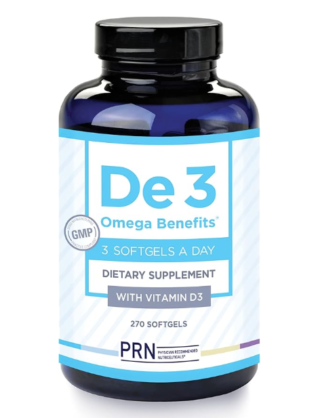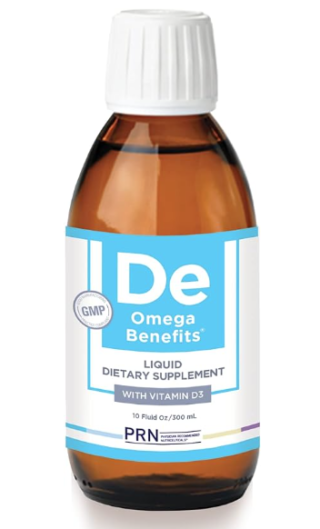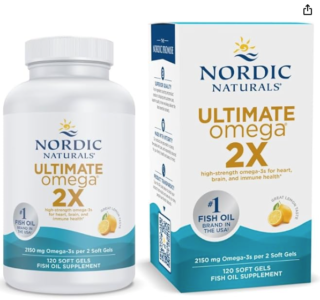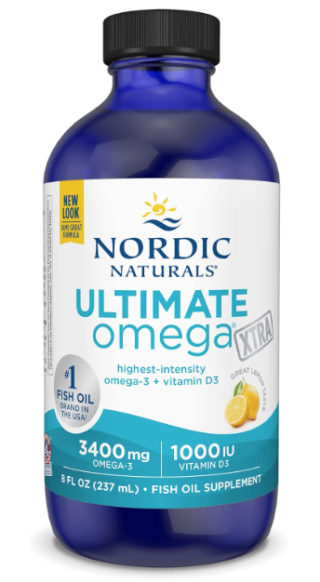What are omega-3’s and are they the same as fish oil?
There are three different types of omega-3’s: ALA, DHA and EPA. Fish oil in general can have omega-3, omega-6 and omega-9s. The omega-3’s are the anti-inflammatory compounds. The omega-6’s and omega-9’s are more pro-inflammatory. The DHA and EPA are the omega-3’s that do the heavy lifting to keep your body in an stable state and help your dry eyes. ALA is poorly converted into DHA and EPA by your body. Sources of omega-3’s include walnuts, flax seed, broccoli, edamame, and of course, fish.
Do I need to take omega-3’s?
If it is not contraindicated for you by your physician, then YES! You need to either eat fish or take oral supplementation. In fact, the American Heart Association recommends you eat 3.5 oz of fish twice a week for your heart health. Consider watching the WebMD presentation on the benefits of omega-3’s.
If you are interested in learning more about Omega-3’s and their benefit for your body (not just your eyes), consider reading 1) The Anti-Inflammation Zone: Reversing the Silent Epidemic That’s Destroying Our Health (The Zone) by Dr. Barry Sears and 2) The Omega-3 Effect by Dr. William Sears and Dr. James Sears.
Omega-3’s can decrease your risk of heart disease, dementia and progression of neurologic conditions.
What fish oil supplement should I take?
Fish oils on the market can have omega-3s, omega-6s and omega-9s. They can also have toxins. Not all fish oil is created the same. Only a quality fish oil with a high level of omega-3 will work for your body’s level of dry eye disease. You need omega-3’s for your dry eye disease as well as the health of your heart and brain. Omega-3s found in fish oil are the foundation of the house that you build to treat your dry eye disease.
Quality fish oil is important and triglyceride based and better absorbed by your body. Not only can poor quality fish oils be a waste of money, it can be toxic to your body. Do not waste money and take fish oil that will flush out of your system and not get absorbed. Do not put toxins into your body which can lead to mercury buildup.
Wouldn’t it be great if there was an independent company that verified the purity and toxin content of fish oil on the market? There is! Visit the International Fish Oil Standards Program website.
You can test if your fish oil is triglyceride based at home. If you Google or YouTube “Styrofoam fish oil test”, you will find that you can test your fish oil by putting a pin in the capsule and expressing the oil into a Styrofoam cup. If the liquid melts the cup within 5-20 minutes, you are taking a poor quality fish oil which is the ethyl ester form, not the triglyceride form. If you are taking a triglyceride form, make sure the company takes the toxins out of the product.
I am already taking omega-3’s. Am I taking enough?
Do you want to know what your body’s current level of omega-3s is? You can get your Omega-3 Index checked in our office. The Omega-3 Index is the percent of red blood cells saturated with omega-3s. The recommended saturation is >8% for your heart health as well as dry eye disease. We use the Omega Quant company to perform this in our office test for you and you will get the results in 2 weeks via email.
Dr. Pradhan’s Recommendations:
My recommendation (Dr. Pradhan’s) is the PRN brand of fish oil which will give you the highest quality fish oil with the proper amount of omega-3s without the toxins. You can request more information about PRN here. Another great company with pure high grade omega-3s is Nordic Naturals (Practioner ID 165623). If you have any medical conditions, please talk to your primary care doctor before starting any new medications or supplements.
(For Informational Purposes only – see disclaimer at bottom of page)
Omega-3 RECOMMENDATIONS for Dry Eye Syndrome:
-
-
-
-
- Daily intake of at least 200 mg of DHA, EPA and 100 mg of ALA if possible. Check out my blog post on other benefits of omega-3’s
- This will take at least 2-3 months for full effect and help your symptoms
- What brand should I get? Get one without a fishy burp and triglyceride based. It should say this on the bottle.
-
-
-
- PRN Brand Omega-3s ( also available in our office; signing up via the link can get you free shipping with recurring orders) Dr. Pradhan Personally takes this daily.
-
- Nordic Naturals Website (use Practioner ID: 165623 to get free shipping and other discounts) or on Nordic Naturals on Amazon
- Consider: Doctor’s Advantage EyeRelief Vitamins (Affliate ID 10372) which also has turmeric for additional anti-inflammatory properties (Note this company has been bought by PRN – amazing collaboration between two great companies)
- Vegetarians option: Arbonne’s omega-3 supplement where the gelatin capsule is even plant-based and now PRN has an vegan omega-3 option! Check out PRN’s Omega-V product!
- Also consider Focus Select (coupon code: SHPR5)
- Carlson’s Norwegian Fish Oil
-
-
-
THE EVIDENCE SUPPORTING OMEGA-3s FOR DRY EYE SYNDROME:
Sheppard JD Jr1, Singh R, McClellan AJ, Weikert MP, Scoper SV, Joly TJ, Whitley WO, Kakkar E, Pflugfelder SC. Long-term Supplementation With n-6 and n-3 PUFAs Improves Moderate-to-Severe Keratoconjunctivitis Sicca: A Randomized Double-Blind Clinical Trial. Cornea. 2013 Jul 23. [Epub ahead of print]
“Supplemental GLA and n-3 PUFAs for 6 months improved ocular irritation symptoms, maintained corneal surface smoothness, and inhibited conjunctival dendritic cell maturation in patients with postmenopausal keratoconjunctivitis sicca.” 38 patients
Kawakita T1, Kawabata F, Tsuji T, Kawashima M, Shimmura S, Tsubota K. Effects of dietary supplementation with fish oil on dry eye syndrome subjects: randomized controlled trial. Biomed Res. 2013;34(5):215-20.
Eicosapentaenoic acid (EPA, 1245 mg/day) and docosahexaenoic acid (DHA, 540 mg/day) for 12 weeks. 27 patients with significant improvement over 12 weeks compared to placebo.
Oleñik A1, Jiménez-Alfaro I, Alejandre-Alba N, Mahillo-Fernández I. A randomized, double-masked study to evaluate the effect of omega-3 fatty acids supplementation in meibomian gland dysfunction. Clin Interv Aging. 2013;8:1133-8. doi: 10.2147/CIA.S48955. Epub 2013 Aug 30.
Oral omega-3 fatty acids, 1.5 grams per day. 61 patients with severe MGD with significant improvement in dry eye after 3 months of omega-3, lids scrubs and tears — when compared to cleaning lids, tears and placebo.
Kangari H1, Eftekhari MH, Sardari S, Hashemi H, Salamzadeh J, Ghassemi-Broumand M, Khabazkhoob M. Short-term consumption of oral omega-3 and dry eye syndrome. Ophthalmology. 2013 Nov;120(11):2191-6. doi: 10.1016/j.ophtha.2013.04.006. Epub 2013 May 1.
Omega-3 360 mg eicosapentaenoic acid [EPA] and 240 mg docosahexaenoic acid [DHA]) daily for 30 days
64 patients results compared to placebo/triglyceride pills – the omega-3 group had a “decrease in the rate of tear evaporation, an improvement in dry eye symptoms, and an increase in tear secretion”.
Brignole-Baudouin F1, Baudouin C, Aragona P, Rolando M, Labetoulle M, Pisella PJ, Barabino S, Siou-Mermet R, Creuzot-Garcher C. A multicentre, double-masked, randomized, controlled trial assessing the effect of oral supplementation of omega-3 and omega-6 fatty acids on a conjunctival inflammatory marker in dry eye patients. Acta Ophthalmol. 2011 Nov;89(7):e591-7. doi: 10.1111/j.1755-3768.2011.02196.x. Epub 2011 Aug 11.
“This study demonstrates that supplementation with omega-3 and omega-6 fatty acids can reduce expression of HLA-DR conjunctival inflammatory marker and may help improve DES symptoms.” 106 patients
Wojtowicz JC1, Butovich I, Uchiyama E, Aronowicz J, Agee S, McCulley JP. Pilot, prospective, randomized, double-masked, placebo-controlled clinical trial of an omega-3 supplement for dry eye. Cornea. 2011 Mar;30(3):308-14. doi: 10.1097/ICO.0b013e3181f22e03.
“Dietary supplementation with omega-3 fatty acids in dry eye showed no significant effect in meibum lipid composition or aqueous tear evaporation rate. On the other hand, the average tear production and tear volume was increased in the omega-3 group as indicated by both Schirmer testing and fluorophotometry.”
450 mg of eicosapentaenoic acid, 300 mg of docosahexaenoic acid, and 1000 mg of flaxseed oil (TheraTears Nutrition; Advanced Vision Research, Woburn, MA) for 90 days in 36 patients.
Miljanovi? B1, Trivedi KA, Dana MR, Gilbard JP, Buring JE, Schaumberg DA. Relation between dietary n-3 and n-6 fatty acids and clinically diagnosed dry eye syndrome in women. Am J Clin Nutr. 2005 Oct;82(4):887-93.
“These results suggest that a higher dietary intake of n-3 FAs is associated with a decreased incidence of DES in women. These findings are consistent with anecdotal clinical observations and postulated biological mechanisms.”
“Of the 39876 female health professionals in the Women’s Health Study (WHS), 32470 women aged 45-84 y who provided information on diet and DES were cross-sectionally studied”
Liu A, Ji J. Omega-3 essential fatty acids therapy for dry eye syndrome: a meta-analysis of randomized controlled studies. Med Sci Monit. 2014 Sep 6;20:1583-9. doi: 10.12659/MSM.891364. “Based on the data included in our meta-analysis, omega-3 fatty acid was associated with better TBUT and Schirmer’s. No significant differences were detected in OSDI test results. Consequently, our findings suggest that omega-3 fatty acid offers is an effective therapy for dry eye syndrome.” Meta-analysis of 7 studies involving 790 patients
Oleñik A. Effectiveness and tolerability of dietary supplementation with a combination of omega-3 polyunsaturated fatty acids and antioxidants in the treatment of dry eye symptoms: results of a prospective study. Clin Ophthalmol. 2014;8:169-76. doi: 10.2147/OPTH.S54658. Epub 2014 Jan 6. “Dietary supplementation with a combination of omega-3 essential fatty acids and antioxidants was an effective treatment for dry eye.” 905 patients taking Brudysec 1.5 gm (1050 mg DHA, 127.5 mg EPA, other nutrients such as vitamin A, E, C, zinc, copper, magnesium, selenium, tyrosine, cysteine, glutathione)
Bhargava R1, Kumar P2, Kumar M3, Mehra N1, Mishra A1. A randomized controlled trial of omega-3 fatty acids in dry eye syndrome. Int J Ophthalmol. 2013 Dec 18;6(6):811-6. doi: 10.3980/j.issn.2222-3959.2013.06.13. eCollection 2013.
“Omega-3 fatty acids have a definite role for dry eye syndrome. The benefit seems to be more marked in conditions such as blepharitis and meibomian gland disease. The role of omega fatty acids in tear production and secretion needs further evaluation.” 264 pts placebo vs. “one capsule (500mg) two times a day containing 325mg EPA and 175mg DHA for 3 months (omega-3 group)”
Disclaimer: The information and reference materials provided are intended solely for the general informational purposes only. It is not to be used for treatment purposes, but rather for discussion with the patient’s own physician. The information presented here is not intended to diagnose health problems or to take the place of professional medical care.




